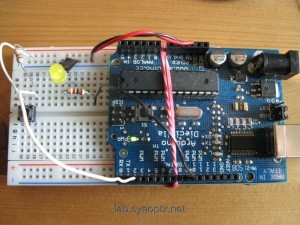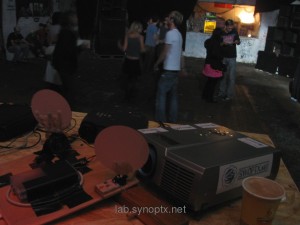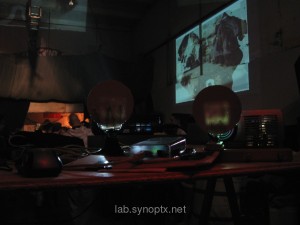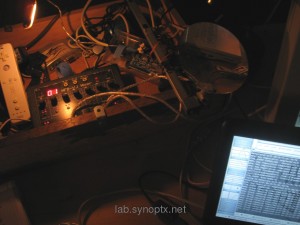Shell Basics Workshop Report n. 1/3 Juli 2010
>> nerdcafe Vetomat 12.7.2010 snufu/fuzzy speach, TKilla report
SHELL BASICS N°1
LinuxWorks workshop about Linux usage of the terminal.
Weekly appointment every Monday in Vetomat at 19:00. Scharnweberstrasse 35, F’hain, Berlin.
the “shell” is the program in the terminal,
–> Application –>Accessories —>Terminal
where you can run all the commands installed on the system
(the shell is called “bash” or “sh” or similar)
>> nerdcafe Vetomat 12.7.2010 snufu/fuzzy speach; Tk report
SHELL BASICS N°1
———–
all lines in this text starting with $ can be executed in a terminal
watch the output of the commands!! (almost) every error is written there!
useful commands:
TAB
Its enough to write few letters and use TAB key — multiple times —
to autocomplete the command!!
history:
arrow-up key – goes back to the previous command
ctrl+r command – search in command history
the format of the command is always:
commandname parameter1 parameter2 ..
programname -h or
programname –help for a long version
gives a short help and possible parameters of the command
$ man programname
manual of the program – RTFM – read this to know what it does 😉
$ apropos burn cd
tells which programs are doind the task
$ ssh user@hostname
login to another computer by console
$ screen -x
join a shared session (on another computer)
must be connected before to (ssh username@hostname)
screen runs multiple terminals (on a remote system) and you can switch between them
screen commands:
ctrl+a a – switch to another terminal
ctrl+a ESC – scroll with cursor keys
$ ls
list content of current directoy
$ ls -a
list –all: shows also hidden “.” dot-files (config files mostly)
$ less
shows 1 PAGE of output of a command (contrast to “more” – that shows more 🙂 )
$ echo hiho > foobar
write hiho into the variable “foobar”
$ cat myman</pre> <pre>$ tom
outputs the name of the var
$ cd / "change dir" to root-dir "/" "/" is the whole system - including all discs/partitions [c]$ cd or cd ~
“change dir” to your home dir “/home/yourusername/”,
$ echo foo > file1
write “foo” into a textfile file1
$ cat file1
print output of file1
$ head
show first lines of file
$ head -n 50
show first 50 lines of file
pipe command “>”
$ iwconfig > file1
write _standard_ output to file1
$ iwconfig > file1
write _serror_ output to file1 – “2” is the code for error outputs
$ echo ritual > fileX
add lines to file
$ echo ritual2 >> fileX
$ echo ritual3 >> fileX
connect terminal to remote window system
$ ssh username@hostname
connect to another computer and executes commands there
$ ssh -X username@hostname
activate X11 windowing forward on other computer
$ username@hostname: firefox
starts for example firefox on the remote machine and shows it on your screen
$ mv file1 newfile
move file1 to another
$ less filename
show content of a text file


















